When I first read about Hamish’s “Win My Leica” contest, I had little thought that I would end up writing the blog post that he mentioned in the contest guidelines. But having submitted my photo, seen it selected for the final ten, and then survived the voting by the narrowest of margins, here I am, reviewing the very camera that was the prize in that contest, the Leica IIIc.
Leica, of course, needs no introduction, but I’ll provide one anyway, in case anyone’s been sleeping. Leica began when Oskar Barnack’s design for a 35mm camera was put into production in 1925 by Ernst Leitz, hence LEItz CAmera, or Leica. By the 1930s the design had evolved into several basic variants: the Leica I, which had no viewfinder or rangefinder; the Leica II, which had a standard two-window rangefinder and viewfinder arrangement but lacked slow speeds; and the Leica III (not a huge marketing budget for coming up with creative names over at Leitz, apparently), the most common model, which included slow speeds down to one second via an additional dial on the front right of the camera body.
The camera being reviewed here is a Leica IIIc, which is one of the most common variants of what are referred to collectively as “Barnack Leicas,” as distinct from the later M models. The IIIc was built for eleven years, from 1940 to 1951. This particular camera, according to its serial number, is part of a production block that dates from 1946 and 1947.
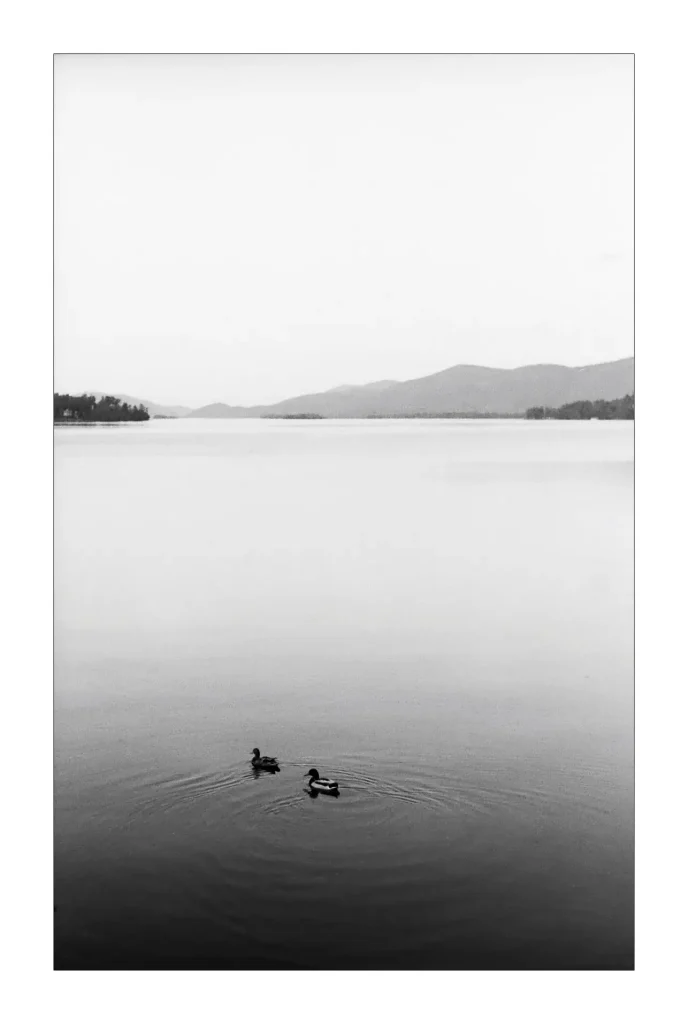
Handling the Leica IIIc
The Leica design was well-tested by the time the war was over, so most of the engineering challenges had been overcome. For a camera built while significant parts of Germany were still smoldering, it’s quality is fairly remarkable. There were some issues to be overcome – the quality of the chrome plating on early post-war cameras is reputed to be suspect, though it seems fine on this camera – but generally speaking, the construction of the Leica IIIc is robust and mechanically elegant.
This build quality is more impressive considering the size of the IIIc, which is quite small indeed. Compared with a camera noted for its modest dimensions, the Olympus XA line, the Leica IIIc is about an inch longer and fractionally taller – that’s it. With a collapsible lens mounted, the IIIc fits into a pocket just as easily as an XA. While you may not find the size an issue, the weight is a different story. Where a little pocket camera like the XA is fairly light and easy to forget about, carrying the IIIc is like having a small brick in your pocket.
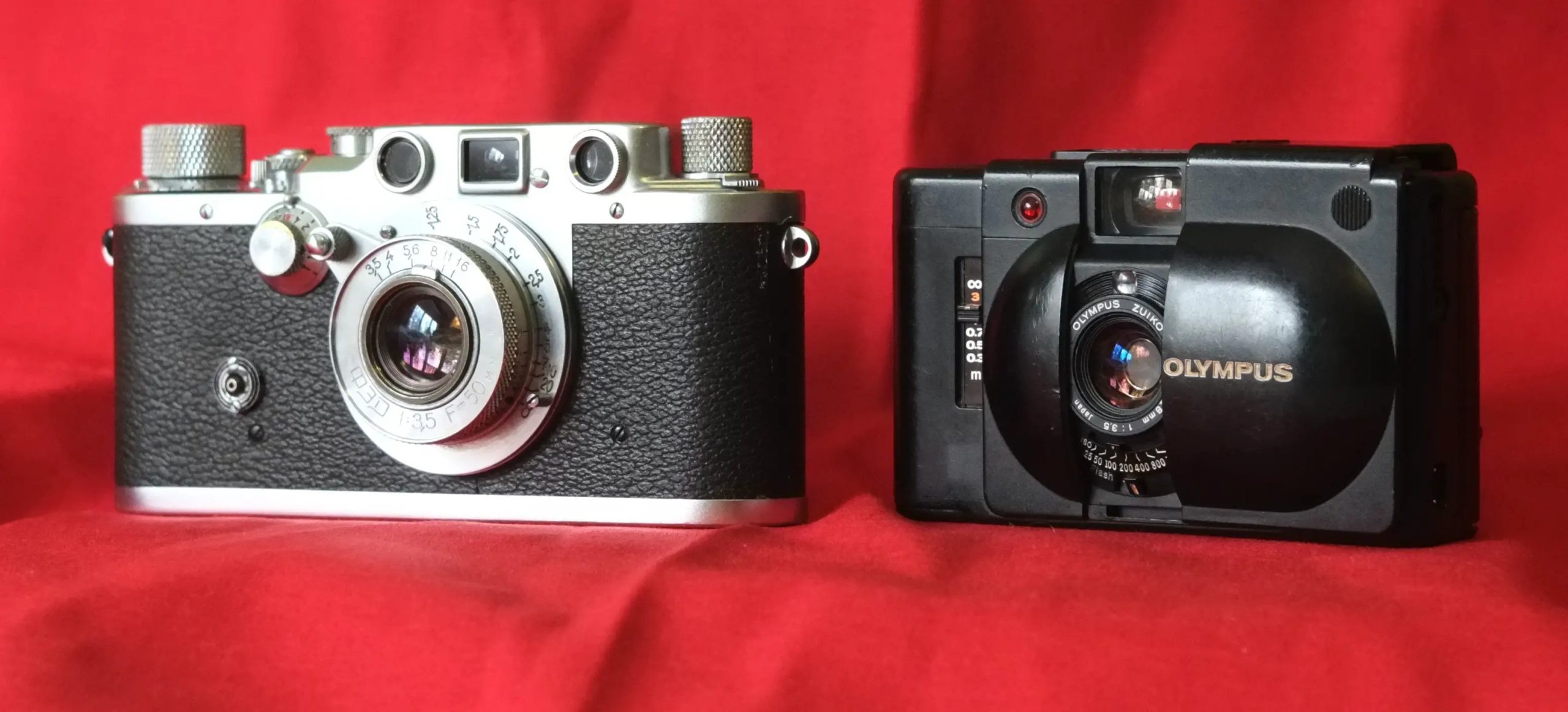
I don’t find the weight a problem. In fact, I like it. Heavy cameras are easier to stabilize and tend to feel more secure in my hand when shooting quickly. This is one of the reasons I prefer cameras from the brass-and-chrome era over the plastic and aluminum that came to dominate the market in the 1960s and beyond. Even with a relatively light lens on it, the Leica IIIc feels dense and rock-solid.
Operating the Leica IIIc
If you cannot be bothered to learn the basics of manual camera operation, you will receive no sympathy from this Leica. Exposure controls are strictly manual, as is every other operation. The focal plane shutter requires that you charge the shutter before setting the speed; this is the opposite of the usual process for leaf shutters, and something to be aware of, as just with leaf shutters, doing it the wrong way can damage the mechanism.
Winding and rewinding are by rotary knobs – none of your fancy levers here. The former also charges the shutter, and is large and easily turned; the frame counter, which is a clever arrangement of gears, is tucked underneath. The rewind knob is small and will slowly chew through the skin on your fingers if you try to rush the process. The Leica IIIc rewards methodical and patient operation.
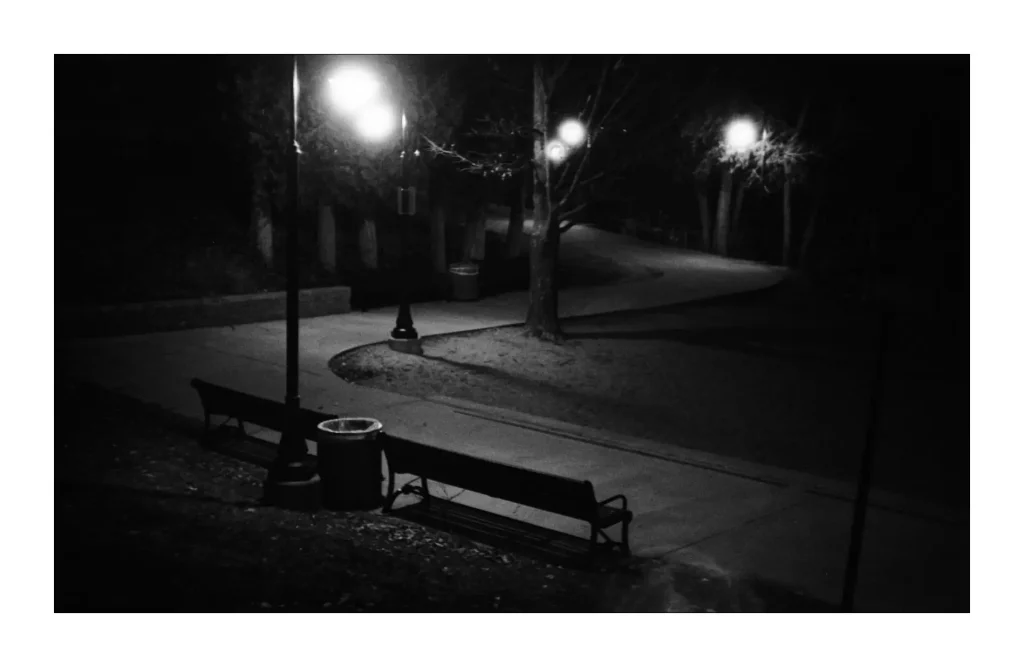
Your patience will be rewarded when it comes to loading the camera as well. The structural rigidity of the Leica IIIc is due in no small part to the fact that it does not have a removable or opening back; instead, the film is loaded by removing the bottom plate, attaching the leader (which you have to trim to avoid it hanging up on the film gate) from the film cartridge to the take-up spool, and sliding the whole thing into the camera as a unit. It’s not hard to do, but it’s not easily done if you’re rushing.
Using the Leica IIIc
Once you’ve managed to trim the leader, load the camera, and reset the film counter (yes, that’s up to you as well), you’re ready to go make pictures. Well, unless you’ve chosen to mount a collapsible lens, in which case you’ll need to make sure that’s extended. I contend that, at least in the case of 50mm lenses, a Barnack Leica really should have a collapsible lens. The camera’s so compact that it seems a shame to ruin that wonderful portability with a giant protrusion sticking out of the front of it. For other focal lengths, do what you want – you’ll have to mount an accessory viewfinder anyway, so the svelte original silhouette is ruined – but for 50mm, stick with something collapsible. Not owning a proper Elmar (Leica purists, you may want to look away now), I’ve mounted my Soviet-made FED 50/3.5, which works just fine.
In practice, the IIIc is quite easy to use once you’ve done it enough to become accustomed to its operational demands. Winding on immediately after shooting should be standard procedure here, since it allows you to set the shutter speed whenever you like; it’s not often considered, but the need to set speeds before winding on leaf shutter cameras is a considerable drawback when it comes to street photography. The Leica, with its focal plane shutter, is very well-suited to this sort of work, being extremely quick to operate intuitively. About the only thing you actually have to look at is the shutter speed dials (fast speeds on top, slow speeds on the front) and the aperture setting on the lens, but if you preset those (I normally shoot in the street in daytime at f/5.6 and 1/125 on Tri-X or HP5+) and zone focus (I use 10ft, or 3m in that pesky metric system the rest of the world keeps trying to push on us), you can shoot almost instantly.
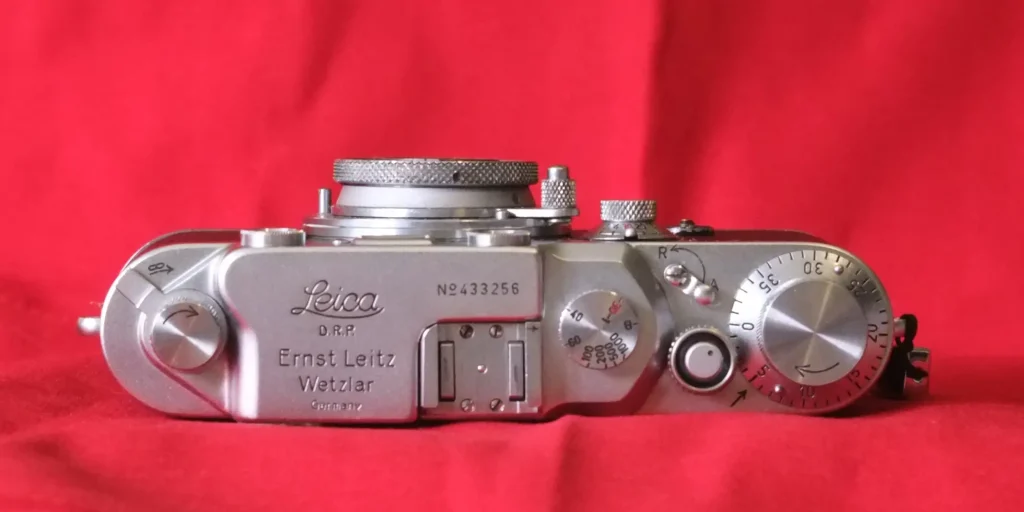
Street photography is probably the genre Leica is most associated with, and with good reason, but it’s not to suggest that the Barnack Leicas are one-trick ponies. They’re perfectly good cameras for many things – travel, architecture, landscape – but they’re also not without their weak suits. You can adapt most interchangeable lens cameras to most roles, but rangefinders and long lenses are not a good match generally, so if you do a lot of wildlife photography, go find an SLR; while I’ll happily use a 90 or even a 135 on my rangefinders on occasion, anything more just doesn’t fly (which is the reason you won’t find lenses longer than 135mm for them).
Potential Issues with the Leica IIIc
While I have had no problems whatsoever with the IIIc Hamish sent me, nor do I expect to, no review would be complete without a discussion of things to look at if you’re considering buying one for yourself. Most issues stem from lack of maintenance, use, or both, plus the obvious age factor – many of these cameras are 70 or 80 years old at this point. Dried up lubricants will cause almost any fault you can imagine short of spontaneous combustion; this is the most common problem you face with an old Leica, but thankfully when you CLA it (either sending it off to a specialist or doing it yourself, if you happen to know what you’re doing, which it should be noted is considerably different from thinking you know what you’re doing) everything should come to life pretty readily. The fabric shutter curtains may be failing to hold back the light, but they can be replaced without too much additional effort or expense during the CLA if needed.
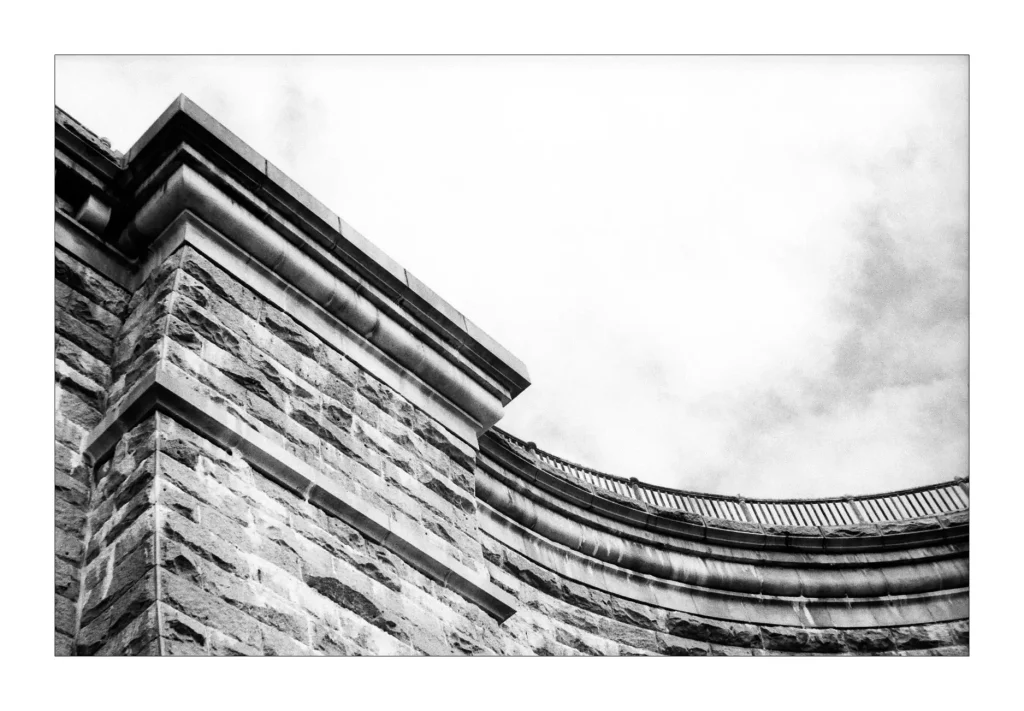
Then there’s the dim rangefinder issue that afflicts many Barnack Leicas. This is again due to age-related degradation of the half-silvered beamsplitter mirror in the rangefinder. It’s a very specialized component, but as you might expect in this day and age, the magic interweb allows even the most obscure commodities to be supplied around the globe. As of this writing (April 2015), there’s a reliable seller on ebay who will happily send you a brand new mirror from Japan to anywhere in the world for a paltry sum.
That’s really about it as far as functional items, so let’s turn our attention to cosmetics. The chrome on Leicas is usually quite good, but as noted above the early post-war cameras like the IIIc sometimes see plating problems. Not much to do about this except have it stripped and painted or live with it; replating is possible, but likely to be costly and not have the same finish as the original chrome. The vulcanite body covering dries up and starts to crack if not cared for, but replacement coverings are available (vinyl or leather primarily, though I’ve heard of a company in the UK that can actually do new vulcanite if you’re a stickler for correctness).
Conclusions
Well, I’ve blathered on long enough, so let me wrap this up. If after reading this you think you might want a Barnack Leica like the IIIc and are struggling to come to a decision, here’s a few helpful questions to guide you.
Are you lazy and inattentive? If so, don’t by a Barnack Leica. It requires work and care to get the most out of it. But then if you are lazy and inattentive, you probably haven’t made it this far down the page.
Are you a hipster looking to impress your hipster friends? Yes, by all means, buy yourself a Leica IIIc. It’s probably the cheapest Leica you’re going to find, which means you won’t spend much (which is good, because you probably don’t have a job), and when your infatuation with film photography passes in six months, you can probably sell it for just about what you paid (assuming you haven’t spilled Sumatran organic fair-trade cold-brewed coffee on it).
Are you doing this because of peer pressure? Come on, you know you want a nice, shiny Leica. Everybody’s got one. What are you waiting for? Just do it. You know you want to.
Are you a loud, self-aggrandizing idiot with lots of money and no sense of decorum? The Leica IIIc is not for you. First off, it’s just not shiny enough. Second, and more importantly, we actual users do not need you bragging to everyone within earshot about your fancy camera. It makes us look guilty by association. Go find a different trophy, like a Lamborghini or a Russian mail-order bride.
Are you interested in a committed relationship with a high quality camera that you intend to take photographs with, for better or for worse, in sickness and in health, for as long as you both shall live? Start shopping. You could do a lot worse than the Leica IIIc, and you’re not getting any younger.
–
Your Humble Filmosaur’s normal habitat can be found over at http://filmosaur.wordpress.com/
We now return you to your regularly scheduled programming.
Share this post:
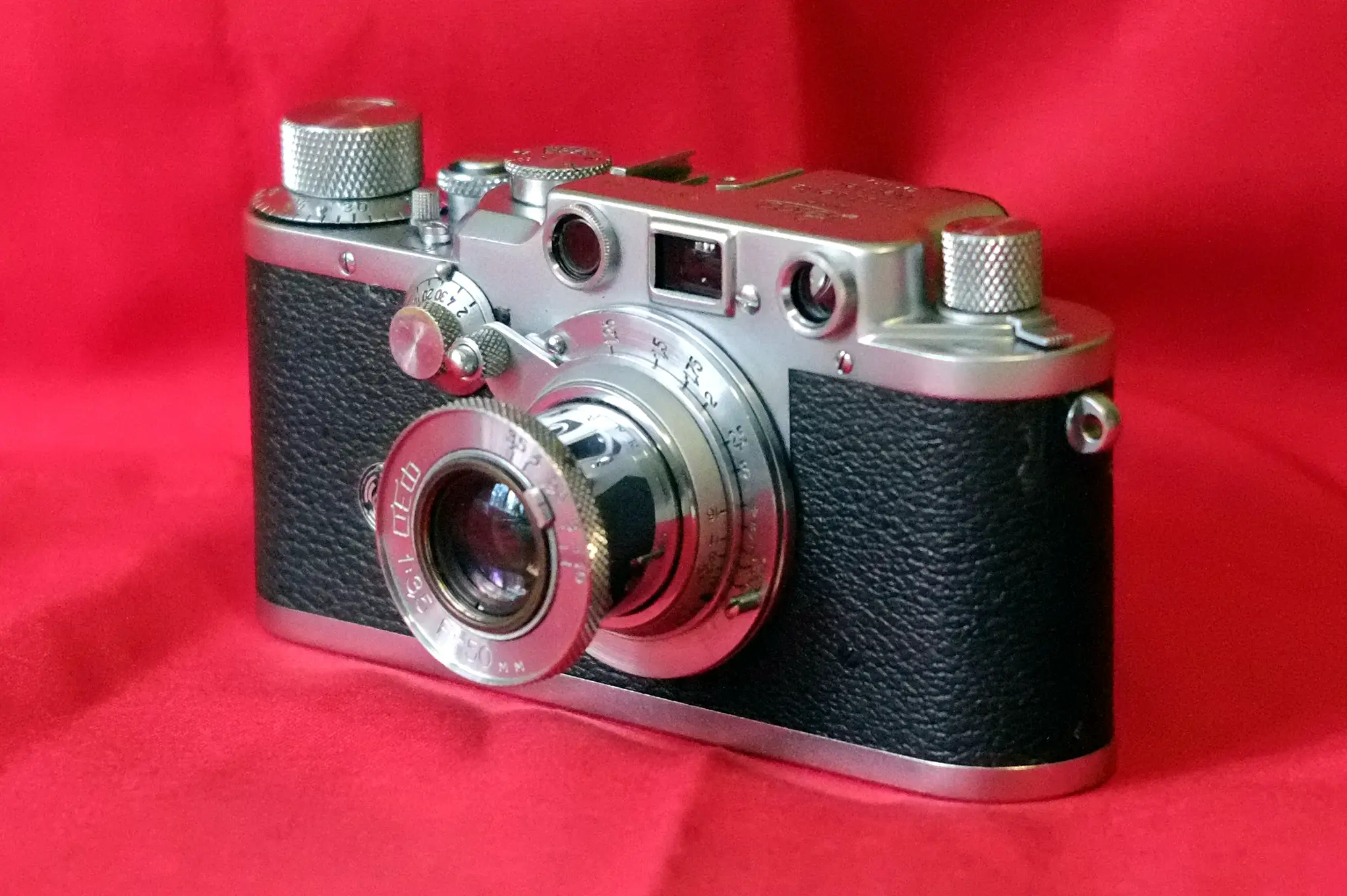








Comments
Hamish Gill on Leica IIIc Review (Long-winded Edition) – By Filmosaur
Comment posted: 02/05/2015
Cheers for doing this review - I'm pleased you are happy with your prize! :)
Andrej on Leica IIIc Review (Long-winded Edition) – By Filmosaur
Comment posted: 02/05/2015
kara woodward on Leica IIIc Review (Long-winded Edition) – By Filmosaur
Comment posted: 22/06/2015
Comment posted: 22/06/2015
Andrej on Leica IIIc Review (Long-winded Edition) – By Filmosaur
Comment posted: 28/06/2015
The ebay seller you're looking for is "nobbysparrow". He's got lots of useful Leica parts in addition to the mirrors, which may help you out with your restoration. Good luck!
kara woodward on Leica IIIc Review (Long-winded Edition) – By Filmosaur
Comment posted: 14/07/2015
Thank you for the contact info.
Kara
Comment posted: 14/07/2015
Pieter Geloen on Leica IIIc Review (Long-winded Edition) – By Filmosaur
Comment posted: 19/10/2015
I bought mine on a local second hand site for about 300€ and had it serviced in Holland for an additional 300€ (yes, in total it was more than I really wanted it to be)
The shuttertimes were all over the place and the second curtain needed to be replaced as it had become brittle and filled with lightleaks. It was more money than I intended to spend on the thing, but after all, I'm happy I did.
Comment posted: 19/10/2015
Comment posted: 19/10/2015
Johnny Martyr on Leica IIIc Review (Long-winded Edition) – By Filmosaur
Comment posted: 21/02/2016
Comment posted: 21/02/2016
David Murray on Leica IIIc Review (Long-winded Edition) – By Filmosaur
Comment posted: 05/10/2016
Comment posted: 05/10/2016
David on Leica IIIc Review (Long-winded Edition) – By Filmosaur
Comment posted: 28/11/2018
Brett Rogers on Leica IIIc Review (Long-winded Edition) – By Filmosaur
Comment posted: 09/04/2019
Cheers
Brett
Camera Review Blog No. 36 – Leica IIIc – Alex Luyckx | Blog on Leica IIIc Review (Long-winded Edition) – By Filmosaur
Comment posted: 05/05/2020
Jay Javier: The Philippines' 'godfather of Soviet cameras' - Kosmo Foto on Leica IIIc Review (Long-winded Edition) – By Filmosaur
Comment posted: 31/01/2021
Bud Sisti on Leica IIIc Review (Long-winded Edition) – By Filmosaur
Comment posted: 10/03/2021
Comment posted: 10/03/2021